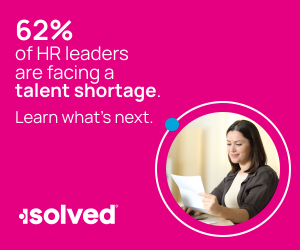Modern Recruitment: Best Practices For Finding And Retaining Top Talent
Posted on 04-10-2025, Read Time: 5 Min
Share:

Highlights:
- Start with a detailed understanding of the ideal candidate—including skills, values, and cultural fit—to streamline your hiring process and attract the right talent.
- Leveraging AI and automation tools can speed up the recruitment process, improve candidate experience, and enhance hiring quality.
- Transparent communication and personalized engagement help candidates determine if your organization aligns with their goals.

To stay ahead, talent acquisition professionals must embrace best practices that prioritize efficiency, candidate experience, and strategic alignment.
1. Define Your Ideal Candidate Profile
A successful hiring process starts with a clear understanding of the ideal candidate. Instead of casting a wide net and sifting through an overwhelming number of applications, take a strategic approach by outlining the skills, experience, and attributes required for success in the role. Beyond qualifications, consider cultural fit, potential for growth, and alignment with organizational values. A well-defined candidate profile serves as a roadmap for targeted recruitment efforts.2. Strengthen Employer Branding to Attract Talent
Recruitment is no longer just about companies evaluating candidates—it’s also about candidates evaluating companies. A strong employer brand that authentically represents company culture, values, and growth opportunities can significantly impact a candidate’s decision to apply.A recent research study of HR professionals revealed that 37% of HR leaders said enhancing employer branding is a top priority to improve recruitment and retention in 2024. Organizations should leverage their career sites, social media presence, employee testimonials, and workplace awards to tell a compelling story that resonates with job seekers. Investing in employer branding ensures that your company stands out in a competitive hiring landscape.
3. Leverage Recruitment Technology for Smarter Hiring
Technology has transformed the hiring process, making it more efficient and data-driven. AI-powered applicant tracking systems (ATS), resume screening tools, and predictive analytics help recruiters identify the best candidates quickly. Additionally, automated communication tools enhance candidate engagement by providing timely updates and reducing delays in the hiring process.Despite the availability of these tools, 42% of HR leaders say outdated technology is a barrier to achieving their recruitment goals, according to the report. Companies that integrate smart recruitment technologies can reduce time-to-fill while improving the quality of hires—and modernizing these tools should be seen as essential, not optional.
4. Personalize Candidate Engagement
A positive candidate experience is crucial for securing top talent. Personalized interactions—such as tailored outreach messages, transparent communication about the hiring process, and meaningful interview experiences—can make a significant impact. Candidates want to feel valued, not like another name in a database.This is especially important given that 56% of HR leaders said improving the candidate experience is a key initiative for their teams this year. Engaging candidates in a human-centric way builds rapport and increases the likelihood of an accepted offer.
5. Conduct Skills-based and Value-driven Interviews
While resumes and cover letters provide insight into a candidate’s qualifications, structured interviews that assess both technical skills and cultural alignment are key to making the right hire. Behavioral and situational interview questions help uncover how candidates think, solve problems, and work within teams. Incorporating skills assessments or job simulations can further validate their ability to perform in the role.6. Maintain an Active Talent Pipeline
Recruitment should not be a reactive process that begins only when an opening arises. Organizations that nurture long-term relationships with potential candidates will have a strong pipeline of talent when new roles become available. A robust candidate relationship management (CRM) strategy helps keep past applicants, passive job seekers, and top talent engaged, ensuring that recruiters can quickly access qualified candidates when needed.In fact, 34% of HR leaders identified building a talent pipeline as a major focus to avoid future talent shortages—a growing concern as turnover and mobility remain high.
7. Prioritize a Mutual Fit
Recruitment is a two-way street. While hiring teams evaluate candidates, job seekers are also assessing whether the company aligns with their career aspirations. Transparent communication about job expectations, company culture, and professional development opportunities allows candidates to make informed decisions.Research also shows a poor alignment between job expectations and reality contributes to early attrition, with nearly 1 in 4 HR leaders citing early turnover as a major challenge. Ensuring alignment from the start leads to higher retention rates and stronger employee engagement.
8. Build a Culture of Continuous Improvement
The recruitment landscape is constantly evolving, and hiring strategies should adapt accordingly. Gathering feedback from candidates, hiring managers, and new employees can provide valuable insights into the effectiveness of the hiring process. Analyzing key hiring metrics—such as time-to-fill, offer acceptance rates, and quality of hire—can help organizations refine their recruitment strategies and drive better outcomes.The same research revealed that only 29% of HR leaders said they feel confident their organization is effectively measuring recruitment success—highlighting the need for improved tracking and analytics.
The Future of Recruitment
Attracting and retaining top talent requires a combination of strategic planning, technology, and a commitment to providing an exceptional candidate experience. Organizations that prioritize these best practices will not only fill roles efficiently but also create a workplace where employees can thrive and contribute to long-term success. By continuously refining recruitment strategies, HR and talent acquisition professionals can build strong, future-ready teams that drive business growth.Author Bio
 |
Heidi Barnett is the President of Talent Acquisition Solutions at isolved, where she leads the strategy behind cutting-edge recruitment technologies. A former CEO of ApplicantPro, Heidi is known for her belief that “Hiring is just marketing” and for helping organizations boost applicant flow by over 200%. She’s a champion for women in leadership, a multi-year Top Workplace honoree, and a passionate advocate for building inclusive, high-performing teams. When she's not transforming how companies hire, Heidi is a proud wife, mom of four, and mountain adventurer. |
Error: No such template "/CustomCode/topleader/category"!


